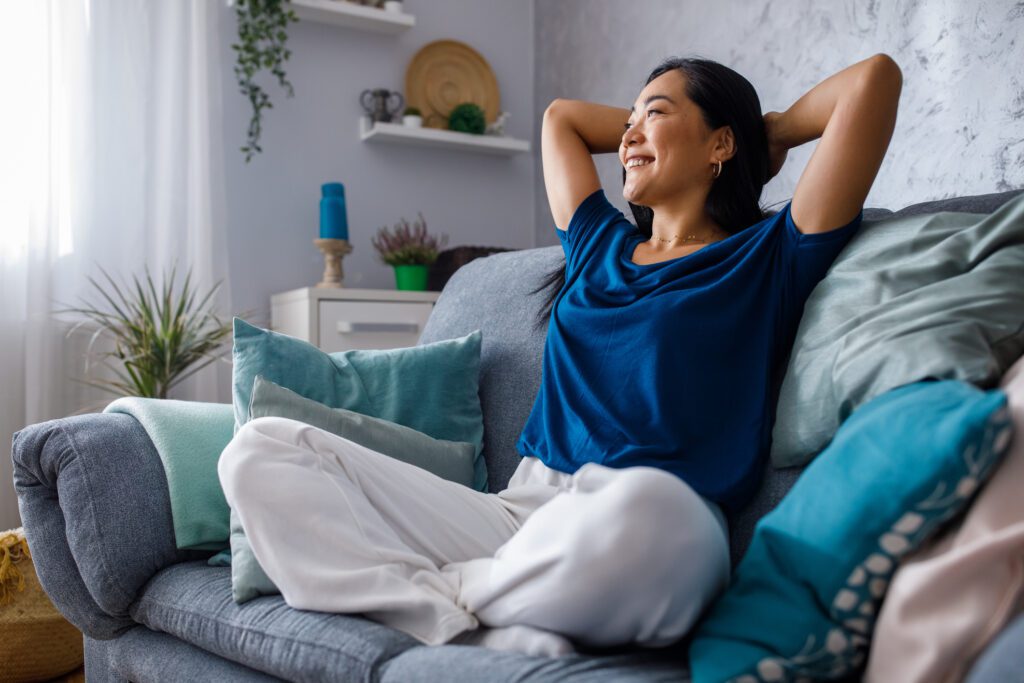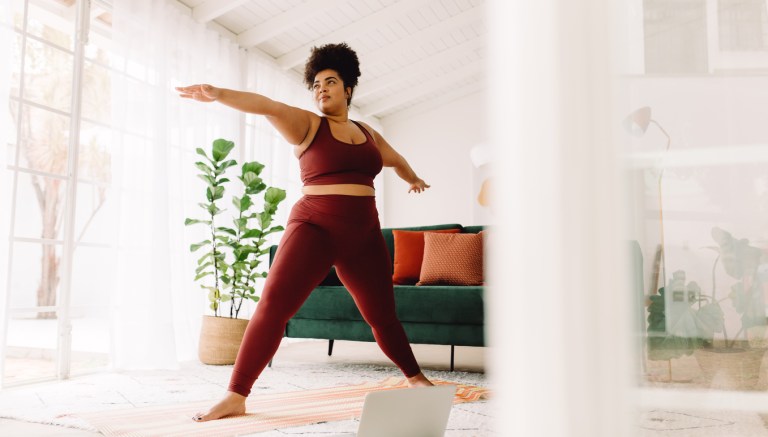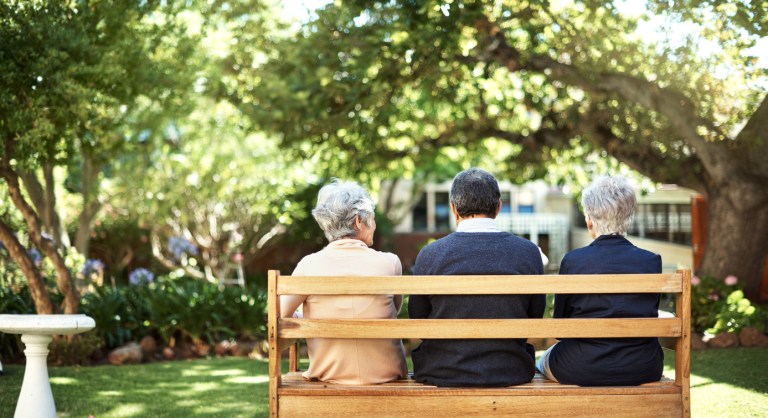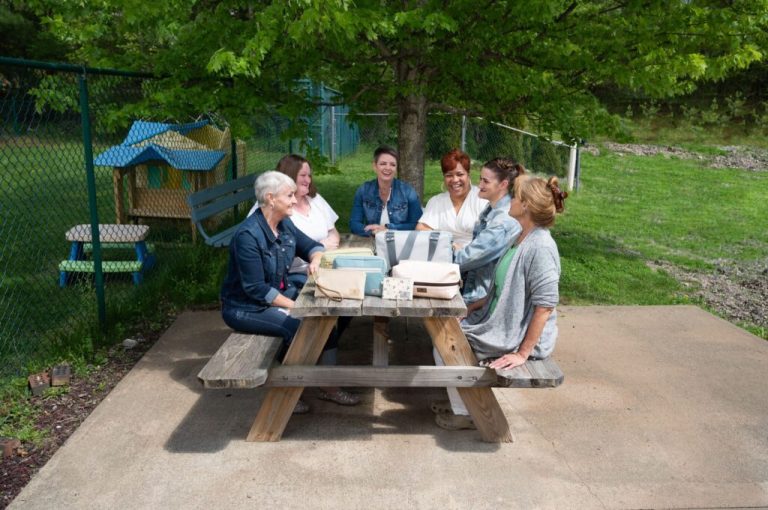Whether big or small, in a bustling city or quiet neighborhood, your home should serve as a safe haven: a place of respite from the what ifs, whys, and uncertainties of the world. How this translates in the four walls we inhabit can look vastly different from person to person. While some may gravitate to neutral tones for a sense of calm, others opt for pops of bright colors and statement pieces.
Regardless of where you fall on the style spectrum, what’s most important is that your home delivers a sense of happiness and joy. To help people accomplish just that, various design trends have emerged over the past decade. Among the most recent is “dopamine decorating,” the practice of infusing warmth and happiness in a way that’s uniquely you.
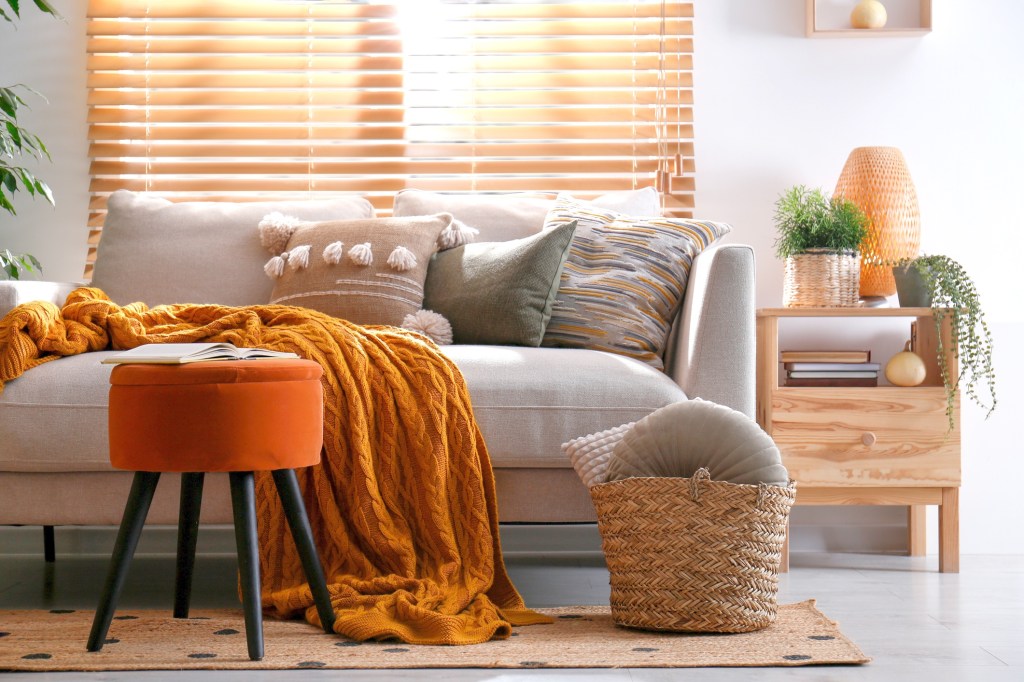
Inspired by the feel-good hormone, dopamine decorating is about embracing nostalgia, whimsy, and the things you love rather than following a strict step-by-step guide. “From having a specific bespoke, custom-made piece as your living room focal point to crafting something exclusive or handmade for the corner nook, transmitting dopamine via decor is subjective,” Rahul Mistri, founder and principal designer for Open Atelier Mumbai, told Architectural Digest.
Joyful room makeovers can take on many different forms. Before dopamine decorating, Marie Kondo spurred the “spark joy” movement with her focus on creating balance by eliminating clutter, which can be beneficial to mental health and self-esteem. On the other end of the spectrum is maximalism: a “more is more” style that emphasizes vibrancy and creativity.
Advertisement
If you’re ready to infuse more joy into your home, keep reading for science-backed tips and advice from design experts about how to make small, affordable tweaks that add big, cheerful changes to your home.
Refresh Your Front Entrance
In feng shui, the front door is known as the “mouth of chi.” Similar to how we nourish our body through our mouths, the belief is that the front door is where energy enters the home.
Joyful welcome mats, a fresh coat of paint on your door or entryway walls, and keepsakes that make you smile are simple ways to liven up the front of your home. According to House and Garden, an entrance hallway “can be a wonderful place to display a treasured collection of art or antiques.”
Tip: A wreath can add a lot of personality and meaning to a front entrance. For example, in Japanese culture, shimenawa wreaths are said to mark a sacred space and symbolize new beginnings at the start of the new year. Or you could take a nod from the French and put out a market basket filled with flowers.
Get Curvy
Ingrid Fetell Lee, author of Joyful, a book about how design can impact health and happiness, explains on her blog The Aesthetics of Joy that round corners are gentle and soft whereas sharp corners “activate a part of the brain associated with unconscious fear.” So consider rounded decor accents, like circular pillows, woven bowls, poufs, and scalloped lamp shades.
If you’re unsure if something is too sharp, Lee suggests a simple test: “If it feels like banging a toe or a shin into a piece of furniture might really hurt, it’s probably going to make you quietly anxious when you have to live with it.”
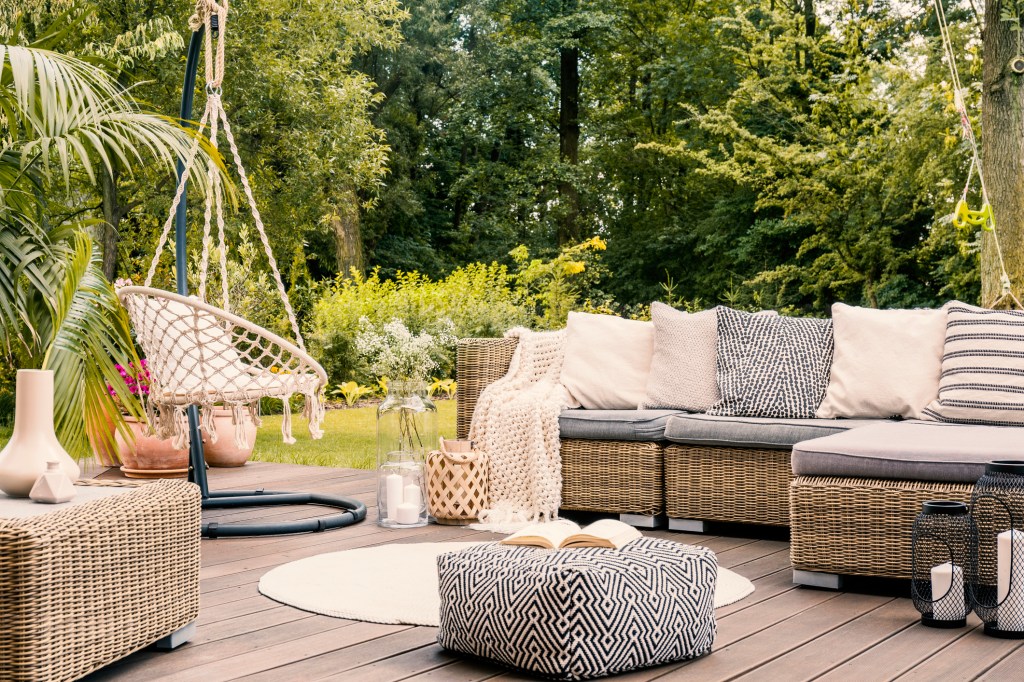
Brighten Up
Ready for a big change? Adding color is an effective way to spruce up a space and change the feel of an area. According to Psychology Today, warm colors (like yellow, orange, and pink) are energizing while cool colors (such as green, blue, and violet) are calming and peaceful.
Advertisement
Below is a guide to colors and meanings, per Verywell Mind.
- Red: passion, excitement, love
- Pink: soft, reserved, earthy
- Purple: mysterious, noble, glamorous
- Blue: wisdom, hope, reason, peace
- Green: nature, growth, freshness
- Yellow: hope, joy, danger
- Orange: warmth, kindness, joy
- White: truth, indifference
- Black: noble, mysterious, cold
If you’re wanting to liven up a space without pulling out the paint brushes, you can incorporate color in your home with bright pillows, bold blankets, and bud vases, along with cheerful planters and colorful curtains.
Tip: Take a look at your closet to see which colors of clothes bring you the most joy, and consider integrating those shades into your home decor.
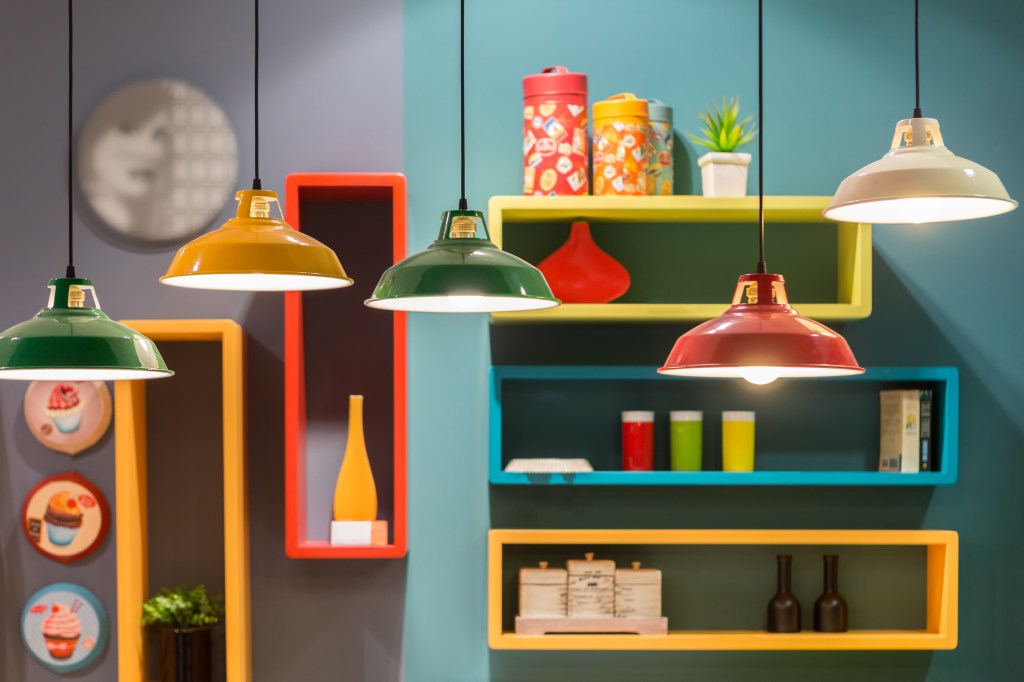
Set a Positive Mood With Scents
Essential oils are known to be helpful mood boosters, particularly citrus scents like lemon and orange. Prefer the smell of rose and jasmine? Scientific research suggests that floral scents can also boost feelings of happiness. “The floral odors can make you happy, floral odors promote social interaction, social approach kinds of behaviors,” psychology professor Jeannette Haviland-Jones told LiveScience.
To reap the potential benefits, bring new scents into your space with clean scented candles, an aroma diffuser, and room mists.
Let Sunshine In
Allowing sunlight to wash through your windows is a science-backed way to add cheer to your home. According to UCLA, a slew of studies demonstrate that natural light has positive effects on mental and physical health. Other research suggests that sunlight can increase serotonin levels, which helps combat depression.
Advertisement
If you live in an area with lots of sunshine, increasing brightness may be a simple matter of opening curtains and windows. In darker rooms, mirrors can help reflect more light, and therapy lamps can mimic natural light during gloomy seasons.
Frame Photos From Good Times
When’s the last time you updated the framed photos in your home? Whether it’s been awhile or you’re just ready for something new, consider framing pictures that capture happy memories. According to Psychology Today, looking at images associated with “specific positive autobiographical memories” can boost mood and prompt people to reconnect with those they’ve grown apart from.
If you do opt for showcasing images, it’s important to be intentional about which ones are selected. The website also notes that photos can also bring up sadness and feelings of disappointment, so be sure to listen to your instincts and frame photos that arouse genuine feelings of joy.
Go for Greenery
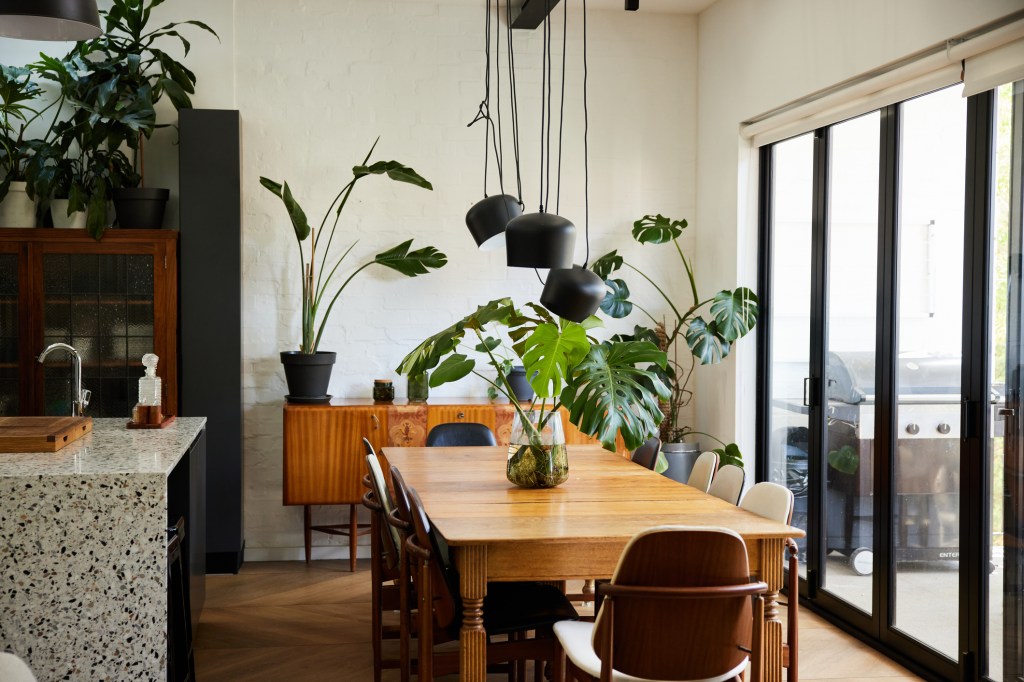
Take a look around your home. Do you see any greenery? If not, you may want to change that. Plants provide a bevy of benefits, including air-purifying perks, helping lower blood pressure, and reducing stress.
Can’t decide which one you want? Thankfully, there’s a plant for every kind of space: Just like people, plants are unique and thrive in different types of environments. For example, jade plants thrive in hours of bright light, while snake plants do best in indirect light. Discover seven houseplants that can improve your well-being.
Advertisement
Add Lighting
Lamps are tried-and-true ingredients to set a cozy mood. The general rule of thumb is to have three to four lighting sources in each room. This may look like a floor lamp that doubles as a reading light, a desk light, and two wall sconces — or twinkle string lights, a couple of candles, and lights with dimmer switches.
Get Hygge
Much more than a decor trend, hygge is a way of life. Denmark’s official website writes that hygge is “about taking time away from the daily rush to be together with people you care about — or even by yourself — to relax and enjoy life’s quieter pleasures.”
Cozy items that can help you embrace all things hygge include soft blankets, warm candles, and comfortable spaces to sit and chat awhile.
Tip: Boost the hygge vibes and turn on a feel-good playlist. Research shows music can reduce anxiety and improve your mood.
Tidy Up
Do messy places make you feel stressed out? You’re not alone. Research has shown that clutter can contribute to depression and confusion and decrease focus.
“When your home is cluttered, messy, or exceptionally dirty, the chaos that the mess creates can impact your ability to focus. The clutter also limits your brain’s ability to process information,” Verywell Mind explains.
Advertisement
On the other hand, researchers have discovered people “are less irritable, less distracted, more productive, and better able to process information with an uncluttered and organized work area.” If the thought of tidying up feels overwhelming, start small by making your bed each morning and finishing the dishes before you turn in for the night.
RELATED: 15 Spring Cleaning Essentials to Make Your Space Sparkle
Bring In Blooms
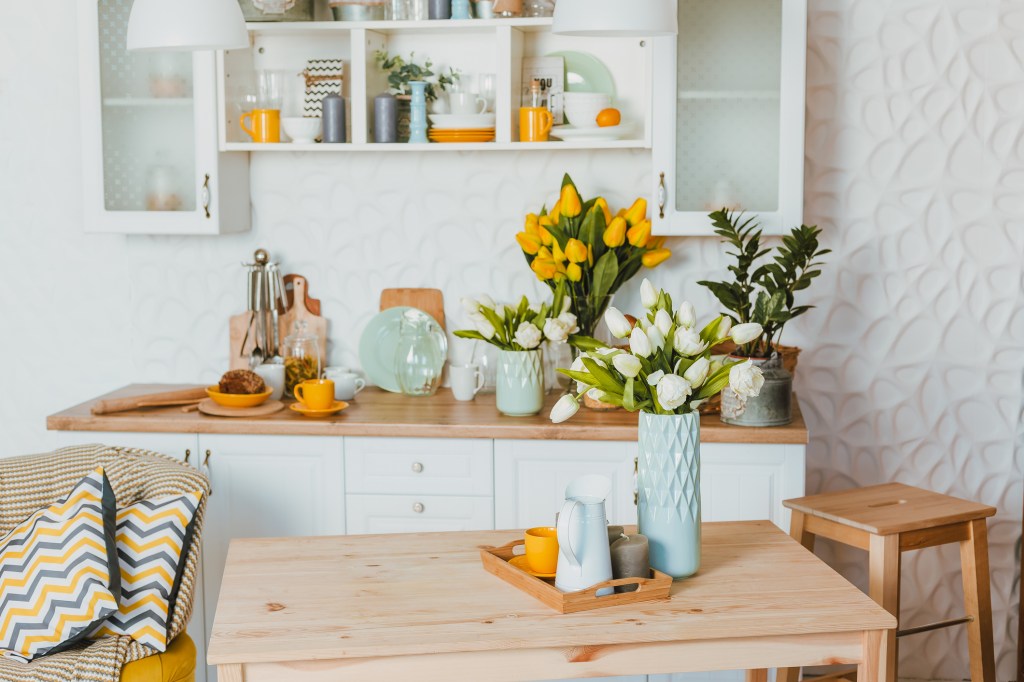
As if we needed another reason to love flowers: They’re scientifically proven to make you feel better. We’re fans of picking up seasonal blooms from local farmers markets, but if you’d rather have flowers that last longer, look into dried bouquets.
Set “No-Phone Zones”
Looking to improve your well-being and mood, and lower your stress levels? Taking time away from your digital devices checks all of the boxes.
Catherine Price, journalist and author of How to Break Up With Your Phone, suggests creating “no-phone zones” — like the dinner table or bedroom. Check out eight tips to use your phone more intentionally.
Advertisement
Go “Joyspotting”
Take inventory of what aesthetics you find joyful in your day-to-day life. Whether you’re on a walk in your neighborhood, eating dinner at a restaurant, or hanging out at a friend’s house, keep an eye out for what speaks to your soul; then, brainstorm ways you can incorporate aspects of them into your home.
Ingrid Fetell Lee dubbed this activity “joyspotting.” She told Nice News: “The first step is just starting to understand which aesthetics you find yourself gravitating toward over and over again. Is it the wide open spaces of freedom and the natural textures in the plants? Or is it a sense of abundance where you find yourself really drawn to layers and textures and different textiles and polka dots and a sense of sensory abundance?”
RELATED: Have You Heard of Cozy Cardio? Learn All About the Latest Fitness Trend — And Give It a Try
Share to:
